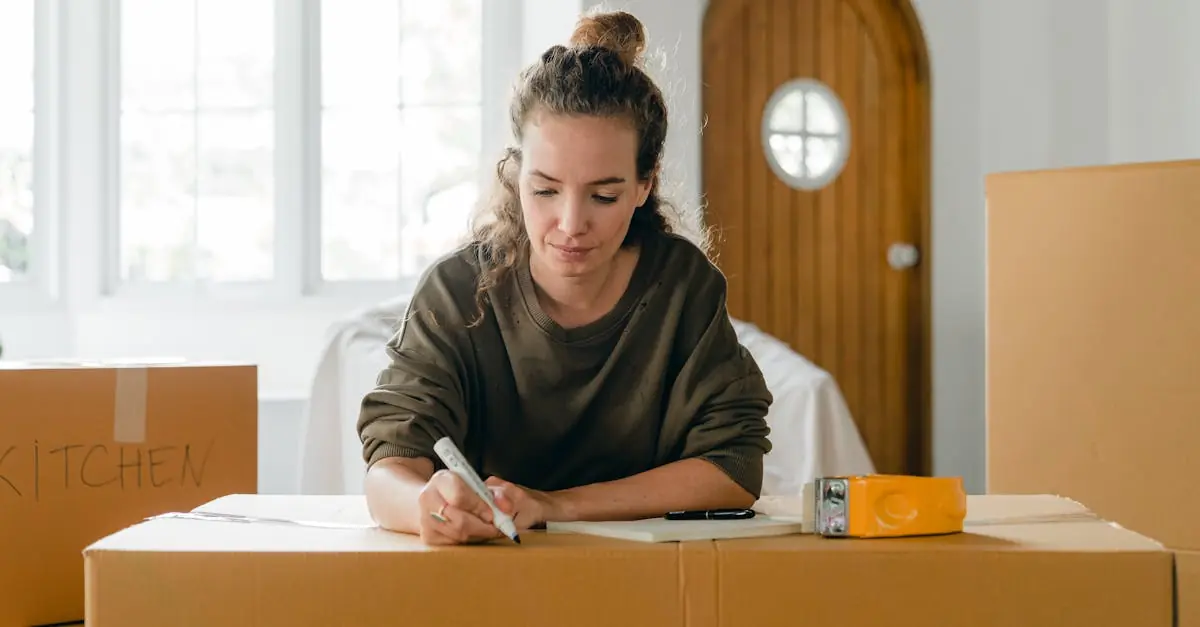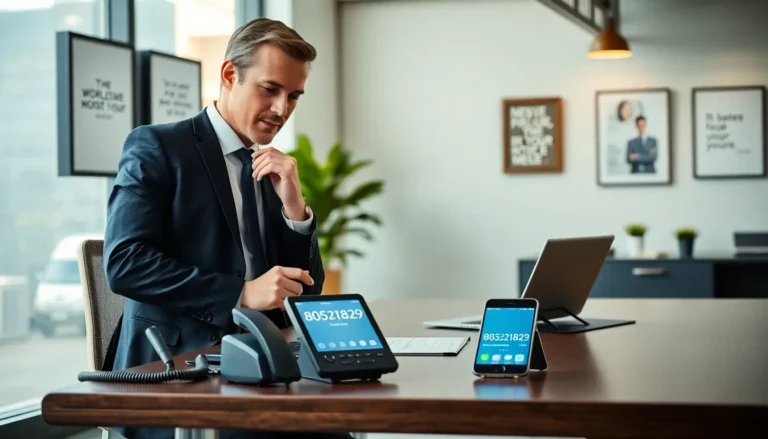Renting can feel like living in a game of Jenga—one wrong move, and everything might come crashing down. While it’s great to have a roof over your head, protecting your cherished belongings from the unpredictable chaos of rental life is a must. Imagine your beloved vintage record player meeting an untimely end because of a leaky ceiling. Not cool, right?
Fear not! With a few savvy strategies, renters can safeguard their treasures from the unexpected. Whether it’s your quirky collection of houseplants or that couch you swore was a steal, knowing how to protect rental belongings can save you from heartache—and maybe a few dollars. Let’s dive into some clever tips that’ll keep your stuff safe and sound while you enjoy the joys of renting.
Table of Contents
ToggleUnderstanding Rental Belongings
Rental belongings encompass everything a tenant brings into a leased space, from furniture and electronics to personal items and clothing. Safeguarding these belongings is crucial for ensuring peace of mind while living in a rental property.
Importance of Protecting Your Items
Protecting belongings sustains both financial security and emotional well-being. Every item contributes to a tenant’s comfort, and loss or damage can lead to unexpected expenses. Prioritizing protection models good responsibility, impacting future rental experiences. In addition, secure belongings enhance a tenant’s ability to enjoy living in their rented space, free from worry about damage or theft.
Common Risks to Rental Belongings
Rental properties face various risks that can jeopardize belongings. Water damage often results from plumbing issues or leaks, affecting furniture and electronics. Fires pose a significant threat too, potentially leading to total loss. Additionally, theft can occur if security is lacking, making valuable items vulnerable. Natural disasters like storms or floods also present risks in certain areas, emphasizing the need for comprehensive protection strategies.
Tips for Protecting Your Rental Belongings
Protecting rental belongings requires vigilance and planning. Implementing these strategies can provide peace of mind and safeguard cherished possessions.
Choosing the Right Insurance
Select renters insurance to cover personal belongings against theft and damage. This insurance often includes liability protection for unforeseen accidents. Compare policies and understand coverage limits, as they vary. A policy covering replacement costs can significantly reduce the financial burden in case of loss. Additionally, consider adding endorsements for high-value items to ensure comprehensive protection.
Securing Your Space
Enhance security by taking proactive steps. Install sturdy locks on doors and windows to deter intruders. Utilize security cameras and alarm systems for added protection. Be aware of the neighborhood’s safety record, which can influence the security measures needed. Maintain good relationships with neighbors; they can act as an extra set of eyes when you’re away.
Using Quality Storage Solutions
Invest in durable storage solutions to preserve belongings. Utilize plastic bins with tight seals for items vulnerable to moisture. Choose shelving and storage containers that withstand wear and tear. Label all boxes clearly to simplify retrieval and organization. Store valuable items off the ground in flood-prone areas to mitigate potential damage from water exposure.
Organizing and Labeling Your Items
Organizing and labeling items enhances protection and simplifies access. Proper organization reduces clutter and ensures belongings are easy to find.
Benefits of Proper Organization
Improved organization leads to quick access during emergencies. When belongings are neatly arranged, identifying damaged items becomes straightforward. It also minimizes the likelihood of accidents, such as tripping over misplaced shoes or equipment. Additionally, organized items can reduce stress by providing peace of mind. Renters often feel more in control when surrounded by an orderly environment. Streamlining packing and unpacking processes becomes much simpler. Organized spaces contribute to efficient use of available storage.
Strategies for Effective Labeling
Effective labeling provides clarity and quick identification of contents. Use clear, identifiable labels for each box or container to enhance visibility. Consider labeling based on item categories, such as kitchen gadgets or seasonal clothing. Choose color-coded labels to differentiate between personal and shared belongings. A uniform labeling system eliminates confusion when searching for essentials. Always include important information like fragile items or special care instructions on the labels. Invest in a label maker for consistent, professional-looking labels that withstand wear. Combining organization and labeling fosters a more efficient living space and protects valuable belongings.
Documenting Your Belongings
Documenting belongings ensures protection and facilitates claims if damage occurs. Keeping an organized record helps manage items effectively.
Creating an Inventory List
Creating an inventory list involves cataloging all belongings. Start by noting each item’s name, purchase date, and estimated value. Group items by category, such as electronics, furniture, and clothing. Maintain a physical and digital copy for easy access. Update the inventory regularly, especially after major purchases or changes in the household. This list provides critical information for insurance claims and enhances overall organization.
Taking Photos for Insurance Purposes
Taking photos of belongings serves as visual documentation. Capture images from different angles to ensure detail is clear. Include serial numbers or receipts in the photos when possible for additional proof. Store these images digitally and back them up in a secure location. This photographic evidence speeds up the claims process and substantiates ownership in case of loss or damage. Also, keep photos updated to reflect new purchases or changes in the home’s inventory.
Conclusion
Protecting rental belongings is essential for maintaining peace of mind and financial security. By implementing effective strategies like renters insurance and enhancing security measures, renters can significantly reduce their risk of loss or damage.
Organizing and labeling items not only simplifies access but also minimizes clutter and stress. Documenting belongings with an inventory list and photos further supports protection efforts and streamlines claims processes when necessary.
With these proactive steps, renters can enjoy their living situation while safeguarding their cherished possessions from potential threats. A little preparation goes a long way in ensuring a secure and enjoyable rental experience.





